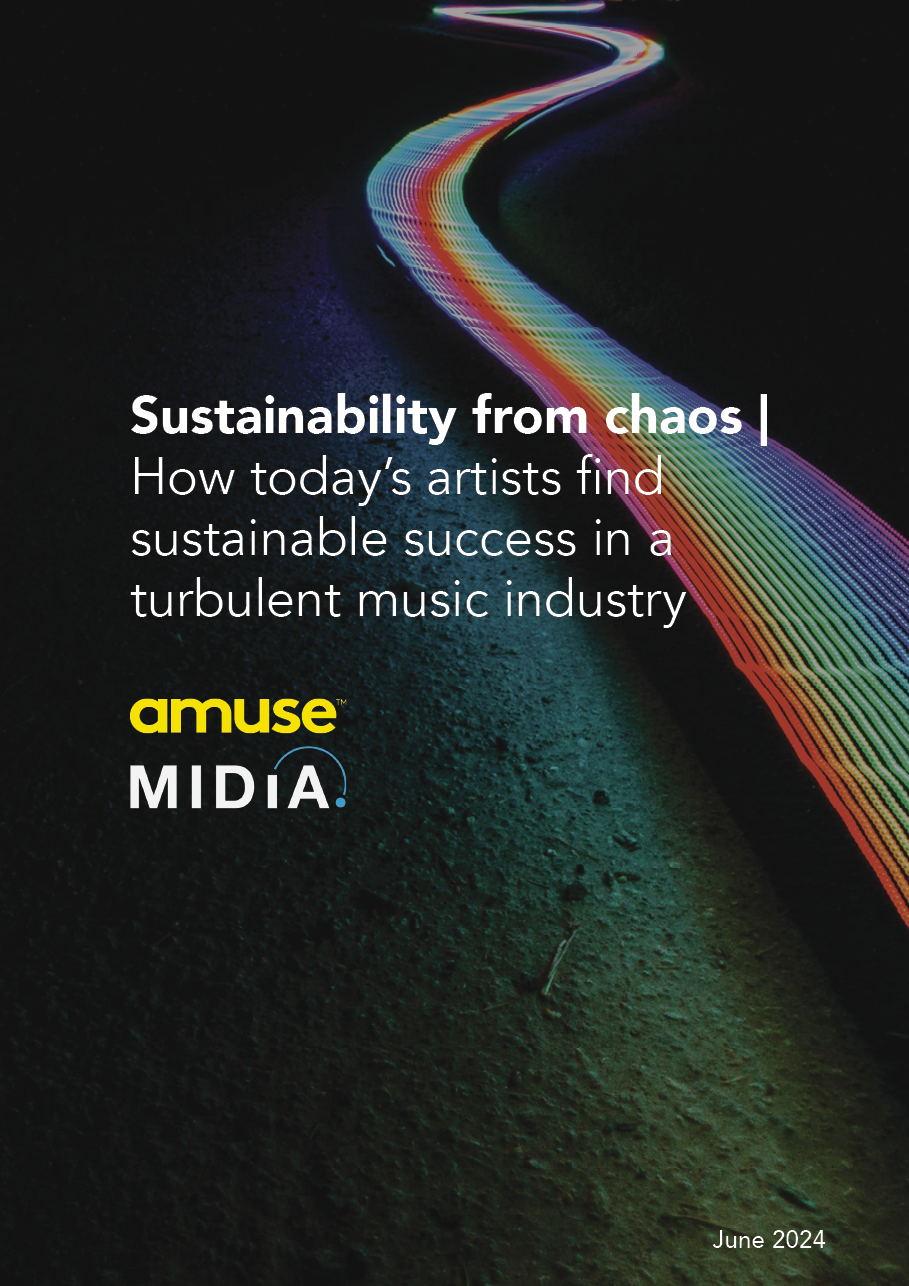Sustainability from chaos How today’s artists find sustainable success in a turbulent music industry
FREE REPORT
To download a copy of this report for free, fill in the form at bottom of this page. Go to the free report form.

Success in the modern music industry has been transformed by the streaming era. Previous markers and methods, such as national charts and radio plays, have been replaced by streaming playlists and social platforms. Yet, while executives can look at high-level metrics across their portfolios, individual artists struggle with the increasingly personalised, algorithm-driven listening habits of audiences who predominantly listen to music in the background – and the resulting lack of formal benchmarks. Only the biggest songs can now break into the mainstream, often only for a short time as viral hits.
In response, artists and their teams have prioritised playlist placement, pre-saves, and paid digital posts in the hope of triggering algorithms. In a campaign, success along these lines is highly visible with spikes in data – a dopamine rush for marketers. For artists, however, indicators that their music has found true fans have become more complex. Untethered from benchmarks like chart placements, songs are released into a marketplace where seemingly anything could happen. Attribution to specific marketing activities around a song has become easier, but establishing whether this song-by-song approach adds up to more fans for an artist remains as hard as ever. The song-first approach leaves less room for artists to grow as a brand and can leave them disoriented, wondering whether they are succeeding, and on whose terms: their own, or the industry’s.
How do we take the pulse of success for music artists in 2024?
In this report, we explore this question from the artist’s point of view and from the perspective of artist services companies. Using MIDiA’s fifth annual survey of global independent music creators, in-depth conversations with artists, and secondary research on topics such as career longevity and success, we re-evaluate what success looks like for the modern-day music artist. We advocate for a more holistic, longer-term view of success, and a broader set of metrics to measure it. Finally, we consider the implications for labels and artist services companies.
